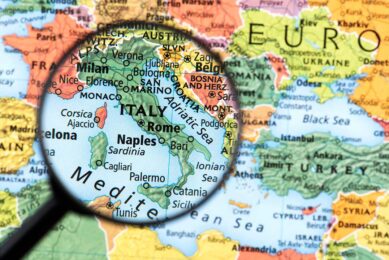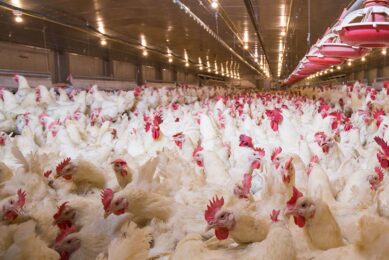EU salmonella spike caused by egg contamination

An increase in levels of salmonella contamination in eggs has been blamed for a rise in total cases of salmonellosis across the European Union after years of decline.
Cases of Salmonella Enteritidis acquired in the EU have increased in humans by 3% since 2014, according to the annual joint report by the European Centre for Disease Prevention and Control (ECDC) and the European Food Safety Authority (EFSA). In laying hens, the prevalence increased from 0.7% to 1.21% over the same period. For last year, S. Enteritidis caused one in 6 foodborne disease outbreaks.
Highest deaths among outbreak cases
There were 94,530 human cases of salmonellosis reported in the EU in 2016. The most widespread S. Enteritidis accounted for 58% of all cases originating in the EU and is mostly associated with the consumption of eggs, egg products and poultry meat. Illnesses from salmonella also caused the highest hospitalisation and deaths among outbreak cases and salmonella from eggs caused the highest number of outbreak cases last year – 1,882.
Understanding the reasons behind the salmonella rise
Marta Hugas, EFSA’s Chief Scientist, said the decrease in Salmonella over the past decade had been one of the success stories of the EU food safety system.
“Recent S. Enteritidis outbreaks contributed to a change in this trend in humans and poultry. Further investigations by competent authorities in the field of public health and food safety will be crucial to understand the reasons behind the increase.”
Mike Catchpole, ECDC’s Chief Scientist, warned that the increase shown by surveillance data was a reminder of the need to remain vigilant.
“Even in a state of high awareness and with national control programmes for S. Enteritidis in place, there is a need for continuing risk management actions at the Member State level and EU level,” he added.
Since February: 8 countries with 196 confirmed cases
European countries this year have been battling an ongoing pan-European outbreak linked to eggs from Poland. In a separate joint report, the ECDC and EFSA said that, since 1 February, 8 countries had reported 196 confirmed and 72 probable cases. Before February, 16 nations had reported 340 confirmed and 374 probable cases linked to the outbreak.
Campylobacter and listeria rise too
Campylobacter is still the most reported foodborne pathogen in humans, with 246,307 infections detected in European countries last year – a rise of 6.1% from 2015. But fatality levels were low at 0.03%.
The report said Campylobacter were found at high levels in chicken meat, particularly broilers.
There was also a rise in more severe Listeria monocytogenes infections. The EU reported 2,536 cases for 2016, reflecting an increase of 9.3%. There were 247 deaths from the disease, with people aged over 65 particularly affected.
But despite the rise in cases, the ECDC and EFSA said ready-to-eat meals rarely exceeded the legal safety limits for listeria.
Join 31,000+ subscribers
Subscribe to our newsletter to stay updated about all the need-to-know content in the poultry sector, three times a week. Beheer
Beheer








 WP Admin
WP Admin  Bewerk bericht
Bewerk bericht